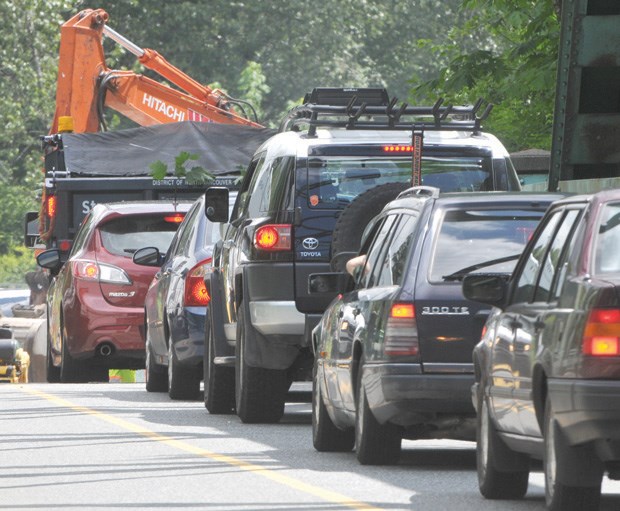As you’re stuck in traffic on the Lions Gate or the Second Narrows this evening, consider this: it could be worse. You could be paying $4.59 for the privilege.
Something called the Mobility Pricing Independent Commission has issued a report recommending two ways of dealing with traffic congestion, both of them charging those stuck in traffic – we, the victims – for the right to be stuck in traffic.
One way is to charge people at “congestion points.” The Lions Gate Bridge is an excellent example of a congestion point ... jamming six lanes into one. So instead of widening the road or providing better transit (and by better transit I don’t mean another bus full of human sardines), the independent commission suggests charging drivers a fee for putting up with said congestion point, coming ($3.55 in the morning) and going ($4.55 in the evening).
I’m not making this up.
Another idea from the folks who brought you congestion points is “distance-based” pricing: charging you up to 32 cents a kilometre for going to work and coming home during rush hour.
For this, the commissioners received $550 per meeting. They were not charged mobility pricing for driving their cars to meetings; if anything, I suspect they submitted mileage expenses, but that could merely be the product of a suspicious, slightly deranged mind.
Seriously, what do you expect from something called the Mobility Pricing Independent Commission, an Orwellian construct of the first order?
“Mobility pricing” refers to the practice of charging people for being stuck in traffic. It has nothing to do with mobility. “Independent commission” it’s not. It’s a creature of TransLink and the Metro Vancouver Mayors’ Council on Regional Transportation. Whatever that means, you can bet it’s going to cost we the drivers in the long run.
The thinking behind all this, independent or otherwise, is seriously flawed. Increasing the cost of the commute may temporarily reduce the volume of traffic during rush hour as people try to avoid the fine. But many people are required to drive there at this time and so are unfairly penalized for their lack of flexibility.
Perhaps if the toll is earmarked for road improvements and better transit, it might have merit, but you know where that money is going – down a deep black hole called general revenue.
Mobility pricing looks great if you’re an official charged with cleaning up traffic after years of letting the infrastructure deteriorate – just pound drivers with a surcharge and the poor desperate fools will walk to work. Problem solved.
Meanwhile, metro will continue to jam six lanes into one, as now congestion becomes a revenue source. Every time you want a little decongestion, you hike up the congestion toll. Maybe the thinking is not so much flawed, but diabolical.
Here’s the thing. Every year, metro has more people than the year before. Every year, the auto industry sells more cars than the year before. Every year, the Lions Gate Bridge still has three lanes. Mobility pricing may loosen up traffic a bit at first, but there’s plenty of fresh supply waiting to clog the artery.
Driving to work mobility-pricing free is not a right, but metro motorists already pay for the privilege by having the highest gasoline prices in North America. So let’s make it more expensive, eh?
This, er, independent report was tabled on May 24. It will be interesting to see if it becomes an issue during the municipal election campaign this fall. As both North Vancouver mayors have announced their retirement, they’re not sticking around to defend it. It will be up to the new kids on the block to champion mobility pricing, and who ever got elected promising to tax rush-hour traffic?
In fact, the current provincial government is the current provincial government only after promising to abandon tolls on the Port Mann and Golden Ears bridges. So it’s not likely to support mobility pricing unless the public has a change of heart or unless they score a secure majority government, which is usually an opportunity to implement new taxes.
I’m not sure how long it will take, but I’m convinced mobility pricing is inevitable. It’s the perfect government solution – a new source of perpetual revenue that increases every year.
I can’t wait to pay my fare share.
Journalist and communications consultant Paul Sullivan has been a North Vancouver resident since the fall of the Berlin Wall and the rise of Madonna. p.sullivan@breakthroughpr.com
What are your thoughts? Send us a letter via email by clicking here or post a comment below.



